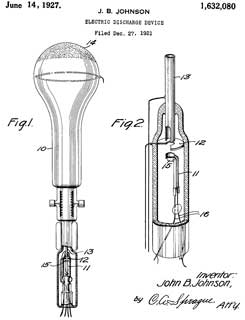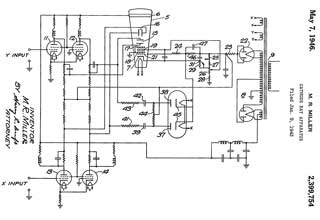
Hot cathode version of the Braun Tube.
The Inventors: Karl Ferdinand Braun -

The X and Y inputs are AC coupled in this patent and sort of balanced (note how the positive input goes to the gird of a tube and the screen grids of the complementary tubes are connected while the grid of the negative input tube is grounded. This allows the use of a single polarity HV power supply. But better balance might be achieved if a symmetrical HV supply was used, like what would be required for Fig 3 above.
In Fig 3 above the deflection amplifiers are balanced and AC coupled.
